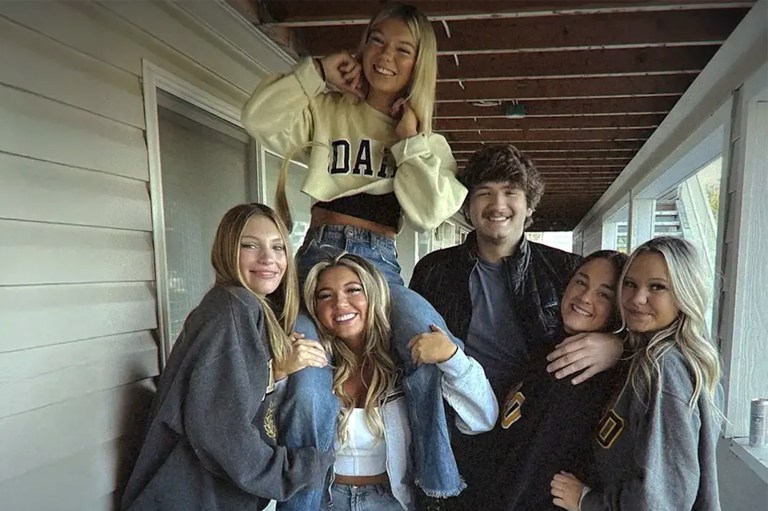
ASMR And The Height Of 21st Century Loneliness
"So yearnful are we for real social bonds that our new wave fantasies are the rudimentary pleasantries of 25 years ago - thanks to the shackles of the World Wide Web, legions of young people today view banal chit chats with waitresses and optometrists as unrealistic as ChatRoulette sessions with Darth Vader and Slender Man."
By James Swift

The first time a friend told me about autonomous sensory meridian response videos – colloquially referred to by the far less clunky acronym “ASMR” – I didn’t believe him. You mean to tell me there’s an entire subculture of people out there who try to get “high” off listening to other people whisper?
Yeah, it sounds too bizarre to be real, but – it is. Don’t ask me for a full scientific explanation, but apparently, some people get this weird (and purportedly pleasurable) tingling sensation down their neck and back when they hear certain sounds at unusually low volumes. The phenomenon, as obscure as it may sound, is actually an astoundingly popular Internet cottage industry, with YouTube now flooded with thousands upon thousands of so-called “ASMRtists” – people who literally make a living recording themselves whispering or making light tapping noises.
The most viewed ASMR videos on YouTube are a grab bag of eclecticness. Some are clearly meant to be weirdo Salvador Dali-esque parodies of ASMR videos (indeed, the top ranked video is a trippy minute-long horror film of an animated “mermaid” being devoured through a first person perspective), but the bulk are pseudo therapeutic opuses like “ASMR 10 Triggers to Help You Sleep” and “Osteopathic Adjustment ASMR.” Search engine optimization be damned, somehow videos with unwieldy titles like “*_* Oh such a good 3-D sound ASMR video *_*” and “Ay-Ay-Ay!!!! Very Painful!!!! Massage Asmr Lower Extremities Massage Asmr” managed to rank No. 2 and No. 3, respectively.
The ASMR video racket is dominated by female YouTubers. Just how much of a stranglehold do women have on the virtual whispering business? Of the top 40 ASMR channels on the social media platform, just four feature male ASMRtists.
That alone would lead me to believe that perhaps “neural relaxation” isn’t the real driving force behind the popularity of the ASMR movement. That said, while there is certainly a hefty amount of unabashedly sexualized and fetish-oriented ASMR material out there, the overwhelming majority of the 6 million or so ASMR videos on YouTube are almost confoundingly mundane. Those seeking erotocized fare in the top viewed videos won’t find a whole lot of kinky footage – unless, of course, the idea of women roleplaying as hair stylists, soap carving or wool knitting tutorials gets you all hot and bothered. Taking it a step further, a few members of the million-views-plus club don’t even involve human language. A video of a guy performing a mime act has more than 8 million views.
Yes, researchers and scientists and bigshot commentators at prestigious magazines and journals can throw out conjecture about ASMR being a trojan horse for perverts, but the incredible cross-sectional appeal of the videos to male and female viewers alike – not to mention the remarkable popularity of videos so desexualized as to be sterile to all but the most dedicated of fringe fetshists – demonstrates this is indeed a legitimate multimedia phenemonen.
In a way, the rise of ASMR videos almost feels like the Dadaism of the social media age. With marketers spending billions of dollars each year on flashy, high-budget, ADD-encouraging advertisements, ASMR almost seems to be some sort of brilliantly subversive anti-marketing statement. But it’s nothing of the sort – instead of being a hilarious middle finger to the corporate aristocracy and their mass media machinery, it’s simply an organic pop cultural movement powered by the Internet-dwelling throngs’ appetite for artificial intimacy.
At the end of the day, I’d venture to guess loneliness is the reason why ASMR videos are so popular. We live in a technology-dominated world, where the majority of our human interaction is machine-regulated – emails, Facebook, text messages – with Internet haunts like Reddit, Twitter and YouTube literally masking our real identities from the masses. Instead of communicating one-on-one, our social media posts are carefully crafted as miniature press releases, intended to gain as much traction with an audience of total strangers as possible. Lest we forget, a good 15 percent of the U.S. millennial population does nothing but sit on their computers all day – and practically the only social interaction they receive is via the warm, plastic glow of their laptops and iPad screens.
What ASMR videos provide is a sort of make belief closeness. It’s no coincidence that videos with such direct titles as “~Simple Pleasures~ASMR Soft Spoken Personal Attention” are so appealing to social isolates whose only “friends” are the denizens of 4Chan. Why wouldn’t people who never leave their parents’ basements be entranced by videos like “ASMR Aviation Sleep Destination” or “ASMR Relaxing Scalp Massage?” Sure, there are plenty of ASMR role play videos out there that teeter-totter a fine line between community theater-level showmanship and bad porno scriptwriting 101, but the most popular “RP” videos – clips with such innocuous titles as “ASMR Helping You Fall Asleep in Bed” and “Relaxing Doctor Visit | ASMR Full Body Exam with Ear Cleaning” clearly speak to a profound sense of societal detachment. So yearnful are we for real social bonds that our new wave fantasies are the rudimentary pleasantries of 25 years ago – thanks to the shackles of the World Wide Web, legions of young people today view banal chit chats with waitresses and optometrists as unrealistic as ChatRoulette sessions with Darth Vader and Slender Man.
I suppose ASMR was the logical progression of the pornographic medium. Internet smut gave us the proxy thrills of sexual titillation, but it never gave us that sense of human connectivity. And now, in a cyberscape where every conceivable sexual quirk can be indulged with a few clicks on Google, it’s only natural that the desperate, distant masses have sought the same sort of synthetic virtual sensation to quell their isolation blues.
There’s a lot to be said of an entire subculture of shut-ins and layabouts – of both sexes – getting their jollies listening to prerecorded messages of co-eds pretending to whisper gibberish into their ears for two straight hours. Most importantly, perhaps? My goodness, do we need to get a life. ![]()











